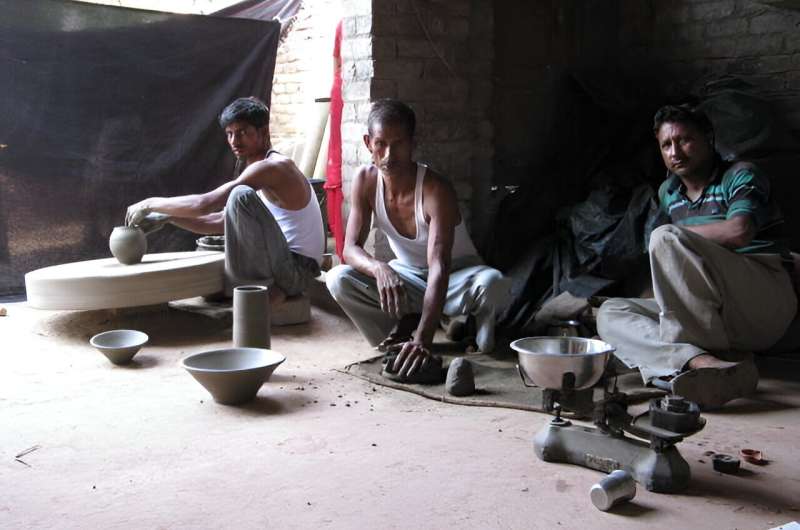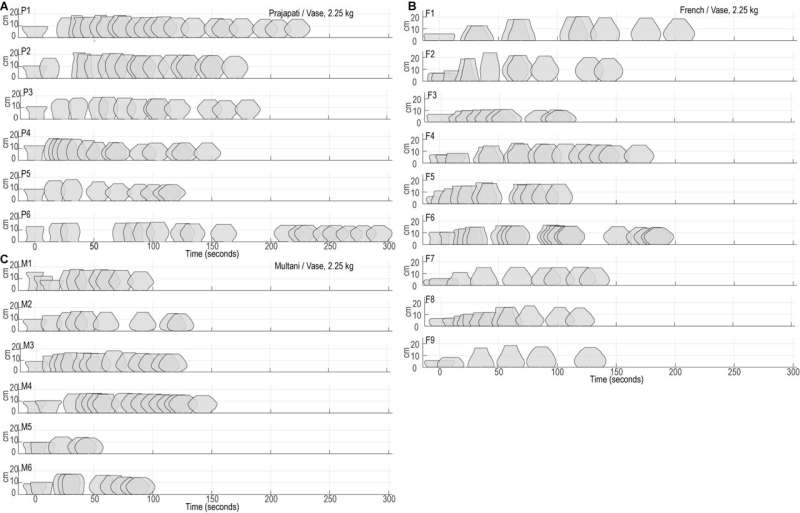This article has been reviewed according to Science X's editorial process and policies. Editors have highlighted the following attributes while ensuring the content's credibility:
fact-checked
trusted source
proofread
Experiment captures why pottery forms are culturally distinct

Potters of different cultural backgrounds learn new types differently, producing cultural differences even in the absence of differential cultural evolution. Kobe University-led research, published in PNAS Nexus, has implications for how we evaluate the difference of archaeological artifacts across cultures.
Cultural artifacts differ between cultures but are relatively stable within cultures. This makes pottery, and in particular its form, an important archaeological indicator to determine the presence of different cultural groups in specific locations and how they influenced each other over time. But where do such culturally stable variations arise from?
The typical explanation for this is through "selective transmission of information," the reasoning behind which is similar to the mechanism of biological evolution: When artisans learn from each other, the fidelity of the learning process is maintained by selective factors such as prestige or conformism. This view entails that the artisans' imperfections are the source of noisy variation and that community-specific differences arise from selective accumulation of such random variation.
Kobe University ecological psychologist Nonaka Tetsushi is convinced that this explanation is incomplete, saying "Being a musician myself, I strongly feel that social learning underlying the skills required to make something is not quite like that. In my research, I want to attribute the individual humans with due complexity required for an adequate account of the eventful environment that shapes their lives."
Consequently, he and his team favor a model around "cultural attractors." Here, culturally stable transmission may arise from cognitive biases just as much as from the cultural backgrounds of the artisans, which includes the different ways in which they work and assess their situations.
To test whether this is in fact happening, Nonaka and his collaborators set up a field experiment. They approached 21 wheel-throwing potters from three different cultural backgrounds (one group in France, one Hindu Indian group and one Muslim Indian group), showed them a few pottery forms that are uncommon in all groups and asked them to reproduce the shapes as faithfully as possible.
The research group, consisting of a potter, an expert in human motor control, a shape analysis expert and an ecological psychologist, captured the shaping process with video cameras and mathematically analyzed both the final shape as well as the trajectories of the vessels' shaping process.
"If we lacked any one of the members of this team, this study would not have been possible," comments Nonaka on the interdisciplinary nature of the study.
They showed that variation in the final shape as well as in the trajectory from the starting shape exhibits community-specific systematic deviations. That is, the differences between individual potters within one community were clearly smaller than the differences between communities, making it possible to identify a product's community of origin.
The important point is that in this experiment, such cultural differences appeared without any time for selective transmission, thus proving the existence of cultural attractors.

Nonaka explains the significance of this, saying, "This is a part of an on-going series of efforts to attribute the individual humans with complexity required for adequate accounts of the ecologies of skilled actions. I am convinced that our approach that studies complex actions in the setting where they normally take place provides important new insights into the richness of the environment that human habits of life are enmeshed with."
The researchers are careful to note that the existence of cultural attractors does not negate selective transmission. "It is possible that community-specific biased attention inherent in pottery techniques provides the source of variation that is selectively copied by subsequent generations," they say in their paper.
This finding is not only relevant to understand how artisans assimilate new cultural elements into their repertoire, but sheds light on how we interpret the artifacts discovered by archaeologists.
Nonaka explains, "The results of this study may lead to a new interpretation of the dynamics of pottery form variation caused, for example, by the arrival of new types of pottery. In addition, by using this method, it may be possible to identify community-specific patterns for archaeological artifact assemblages of unknown authorship."
More information: Tetsushi Nonaka et al, Cultural attraction in pottery practice: Group-specific shape transformations by potters from three communities, PNAS Nexus (2024). DOI: 10.1093/pnasnexus/pgae055
Provided by Kobe University


















